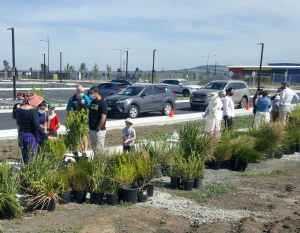A circular economy is based on the principles of designing out waste and pollution, keeping products and materials in use and regenerating natural systems. Seems like a fine approach to advocate if we are in any way serious about the future of our planet.
In general, the industry that sustains me professionally – residential development – is still a long way from embedding contemporary “circular thinking” into its processes. Prevailing methods have evolved through a market driven, immediate-return lens, that over the last decade or so has delivered in spades against commercial benchmarks. So notwithstanding the probability of an increasing market appetite for more sustainable product, until the commercial macro falters circular enlightment is some time away!
Notwithstanding the size of the circular economy (CE) challenge within this sector, My Neighbourhood is fortunate to be engaged on a project with an ambition to start driving incremental change in the mindset that underpins land development and home construction. Exciting announcements beckon – for others to make – around demonstrating great amenity and commercial outcomes that can be achieved in residential built form, through a pilot embrace of CE principles.
My job in leading a project placemaking team includes reading the mood of the community and helping it sustainably achieve those things that align with its collective values and preferences. In this case, inspired through dialogue with some of our resident group and with the unequivocal support of the project landsape manager, we focussed upon the materials waste inherent in the imminent relocation of a temporary sales office. In particular, the demolition of well-established and maintained gardens that surrounded the structure was what gave rise to “Operation Plant Rescue”!
Rather than calling in the ‘dozer to flatten the landscape and dump the green matter, through commiting time and resources to recycling the green-life, the project instead made a significant local statement about waste, its greening ambitions and the importance of the principles that it hopes to demonstrate with its local built-product CE pilot. Throw in a disability-support nursery that cared for the saved and potted plants throughout the long Melbourne lockdown and you have a team effort dedicated to a different, circular way forward.
I’m the fortunate one who got to witness the final stanza in Operation Plant Rescue last weekend: the distribution. What a joy to see this process enacted. A process that undescored the importance of domestic greening and through the modesty of the purchase price enabled residents to embrace it without straining stretched financial resources. A process that aligned diverse minds around a noble cause and helped build friendships around its application. A process that further educated garden novices around plant characteristics and where to access local help with playing their role in greening their suburb. A placemaking process that whilst small in the scheme of things, may have just laid a foundation stone for a mindset shift within this community, towards a circular economy. Small,circular steps.
Congratulations to Mirvac and the Olivine project development and landscape team for making the effort. This project is setting many new benchmarks.
